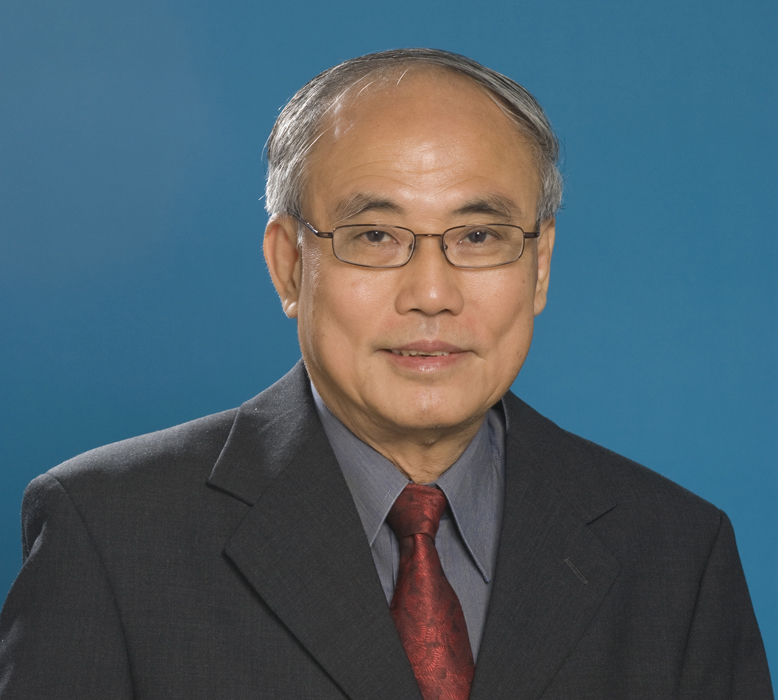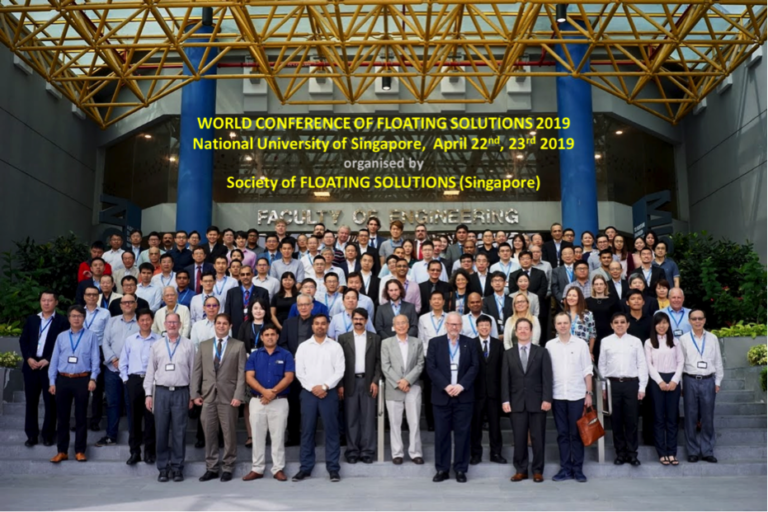President's Message
Message 19/2019
April 22nd and 23rd 2019, mark a major milestone in the short history of the Society.
After one-year of planning and hard work, it pulls off the World Conference of Floating Solutions 2019. The Conference attracted 25 speakers from the Norway, Netherlands, France, Spain, United States, United Kingdom, Iran, Japan, China, Korea, Australia, Serbia and Singapore.
It was an exciting event for both speakers and delegates to share their research and project experience and to build up useful contacts.
Many of the delegates were surprised by the range and immensity of structures that are already in existence in many countries and the many more that are under design and being tested in laboratories. These range from mega islands of 3sq.km being model tested in MARIN in the Netherlands, to floating bridges and tunnels be designed to transport vehicles across the fjords in Norway, floating shipyards, to floating solar and wind farms as well fish farms. While the tallest man-made structure (Burj Khalifa) now stands at 828 metres on land, the tallest building within this decade may stand 1000 metres high founded on the principles Archimedes.
Some of the adjectives that were used to describe the presentations included “inspirational,” “mind-expanding,” “eye-opening.” Some felt that they have been living like the proverbial frog in the well until they see the possibilities that floating structures may be applied to problems related to land scarcity.
Singapore government agencies showed a strong interest judging from the attendees from JTC, URA, HDB, BCA, TCOMS, DSTA, EMA. There was also a large representation of tertiary education institutions, practising architects and engineers and even from the private equity sectors.
The Conference was generously supported financially in one way or another by The HEAD Foundation, Keppel Corporation, GL Engineering and Construction, Woh Hup, KEMSA Far East, Continental Steel, Waterfront Real Estate, Surbana Jurong, Nature Resources Aquaculture and Torrisi & Procopio Architetti and backed by Enterprise Singapore, National University of Singapore, The Institution of Structural Engineers, Singapore Concrete Institute, IMarEST, Society of Naval Architects and Marine Engineers, and by publisher Springer. Their support clearly demonstrates their belief that Singapore needs to create offshore space by means other than land reclamation.
My paper titled “Seascape the Landscape of Singapore, repurposing land in a land scarce nation,” (see pages 351- 371 of the proceedings) proposes the relocation of certain industries, military establishments, ports and recreation spaces now large swathes of land to sea thereby freeing up land for new uses that are cleaner, eco-friendly and more relevant to the 4th Industrial Revolution.
That strategy needs to begin with minimising the shipping traffic between the port limit and the shoreline. This is possible given the fact that 85% of the cargos received at our onshore ports are in transit to other ports in the region. Transhipment activities can be dealt with offshore.
It can be shown with scaled maritime maps that with the port relocated at the inside boundary of our territorial waters, 15% of it (about 100 sq.km) can be used for residential, recreational, commercial and industrial development with floating structures enough to meet the national spatial need for the next 50 years.
Lim Soon Heng
President
April 28, 2019


